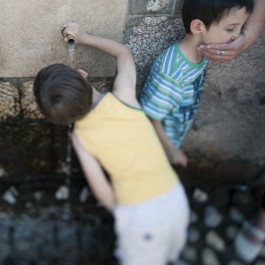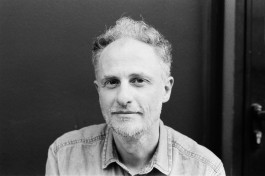Exhibition:
'Post-Bellico. Sul ciò che resta'
Filippo Bardazzi, Ziyah Gafić, Vincenzo Pagliuca, and Nikita Teryoshin
September, 2022
An invitation to consider war not only as an event, but a process that affects society, a structural tension that crosses it, brands it, and inevitably conditions it. Ziyah Gafić was 12 when the Bosnian war started. “Heartland” captures the quiet, solitude, and determination of people who carry on despite thousands of bodies still being exhumed from mass graves. Nikita Teryoshin leads the observer behind the scenes of the global defense business, the opposite of the battlefield: a vast playground for generals and politicians, where the industry mixes with appetizers and shiny weapons.
350 bunkers were built before the outbreak of World War II along the border with Austria in the disputed territory of South Tyrol. Vincenzo Pagliuca explores the educational value of this heritage and also the potential metamorphoses in the future.
Despite the enormous deployment of resources and propaganda, none of the bunkers in Albania has ever served in any conflict. Filippo Bardazzi reminds us that these structures remain a vivid testimony against nationalism and authoritarian regimes that often use war as a threat to fuel power and control over the population.

Exhibition:
'Post-Bellico. Sul ciò che resta'
Filippo Bardazzi, Ziyah Gafić, Vincenzo Pagliuca, and Nikita Teryoshin
September, 2022
An invitation to consider war not only as an event, but a process that affects society, a structural tension that crosses it, brands it, and inevitably conditions it. Ziyah Gafić was 12 when the Bosnian war started. “Heartland” captures the quiet, solitude, and determination of people who carry on despite thousands of bodies still being exhumed from mass graves. Nikita Teryoshin leads the observer behind the scenes of the global defense business, the opposite of the battlefield: a vast playground for generals and politicians, where the industry mixes with appetizers and shiny weapons.
350 bunkers were built before the outbreak of World War II along the border with Austria in the disputed territory of South Tyrol. Vincenzo Pagliuca explores the educational value of this heritage and also the potential metamorphoses in the future.
Despite the enormous deployment of resources and propaganda, none of the bunkers in Albania has ever served in any conflict. Filippo Bardazzi reminds us that these structures remain a vivid testimony against nationalism and authoritarian regimes that often use war as a threat to fuel power and control over the population.

